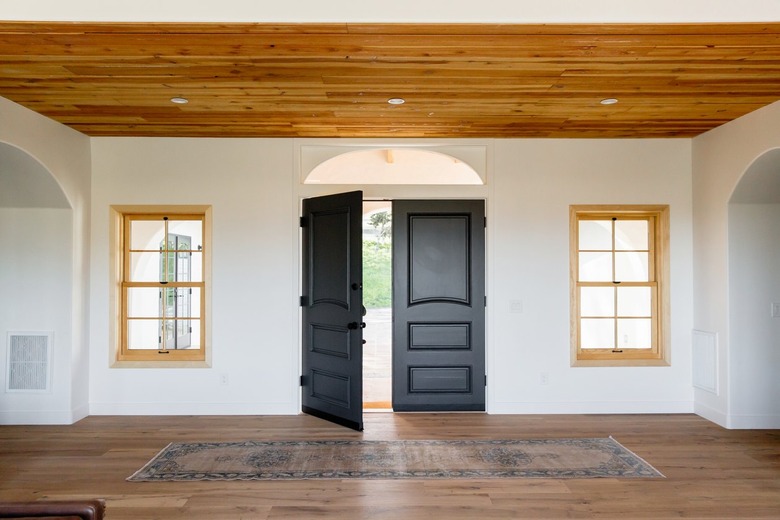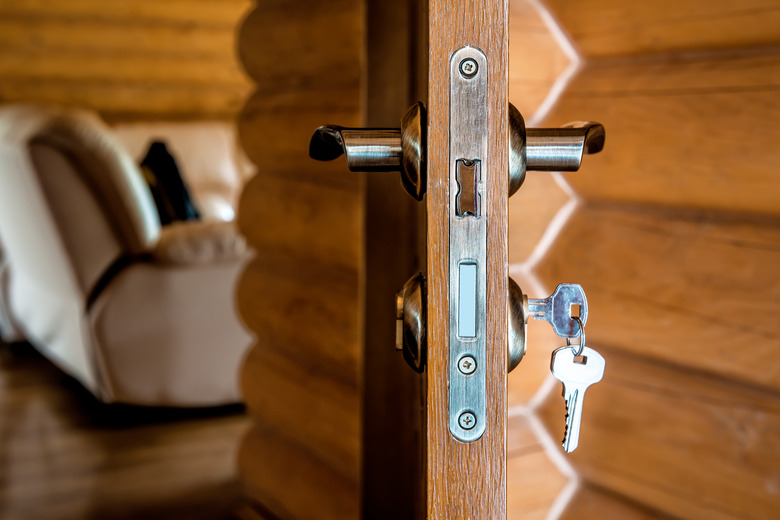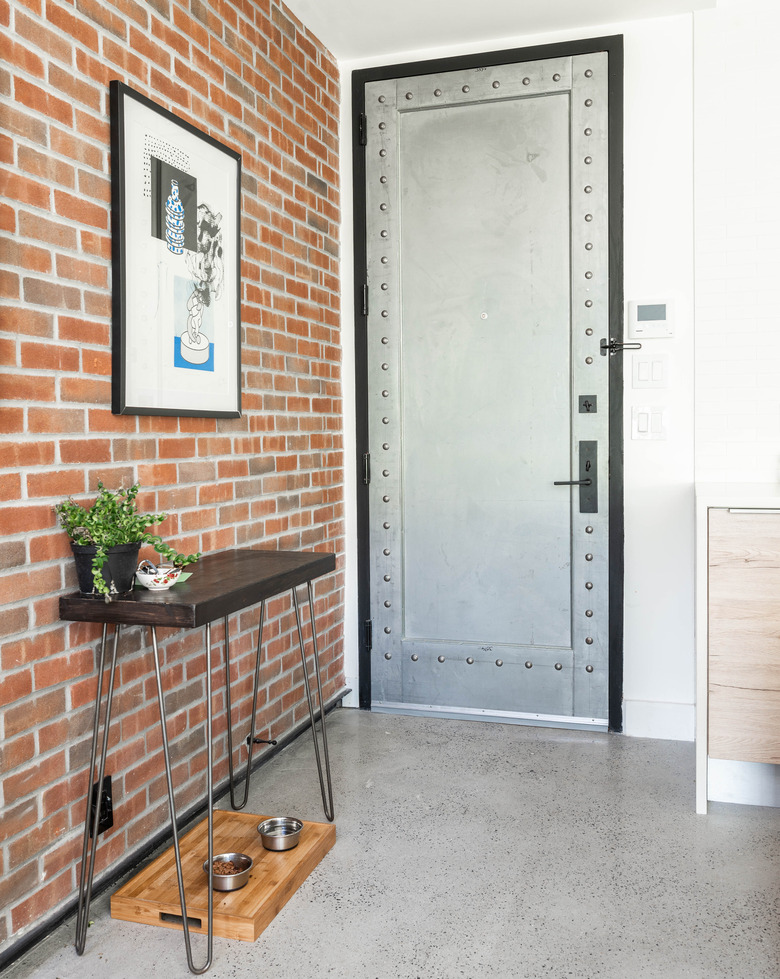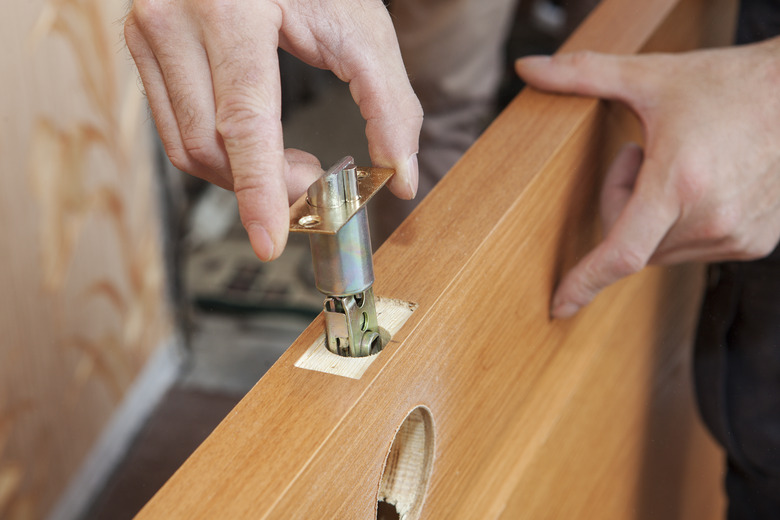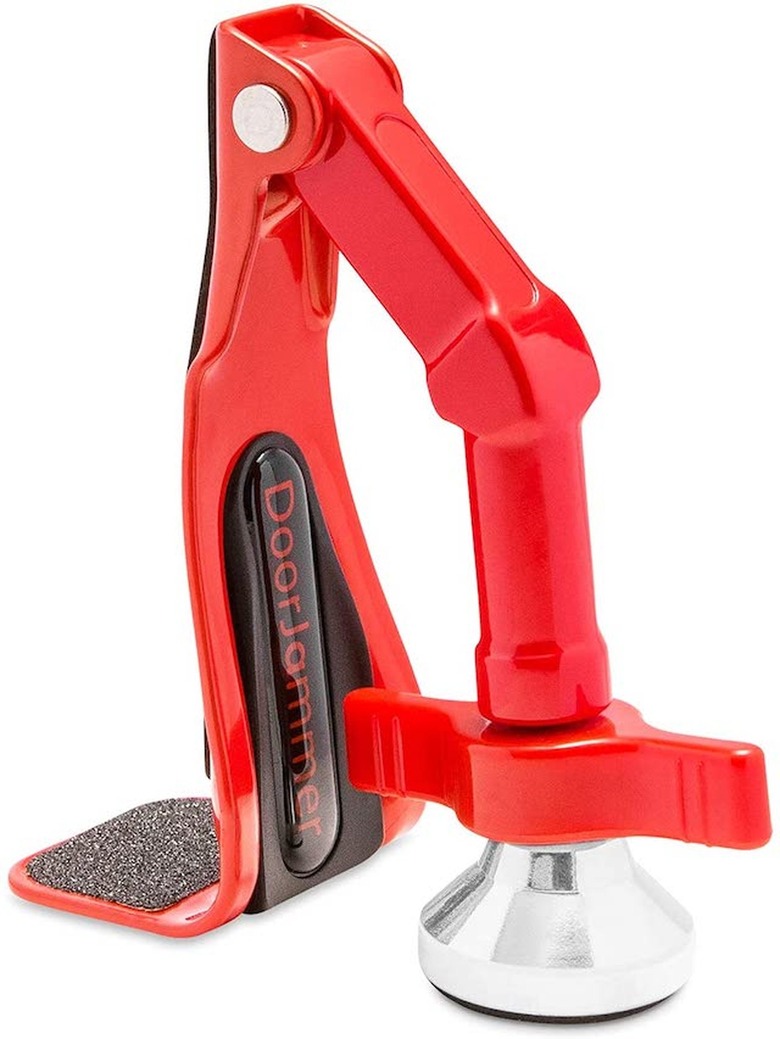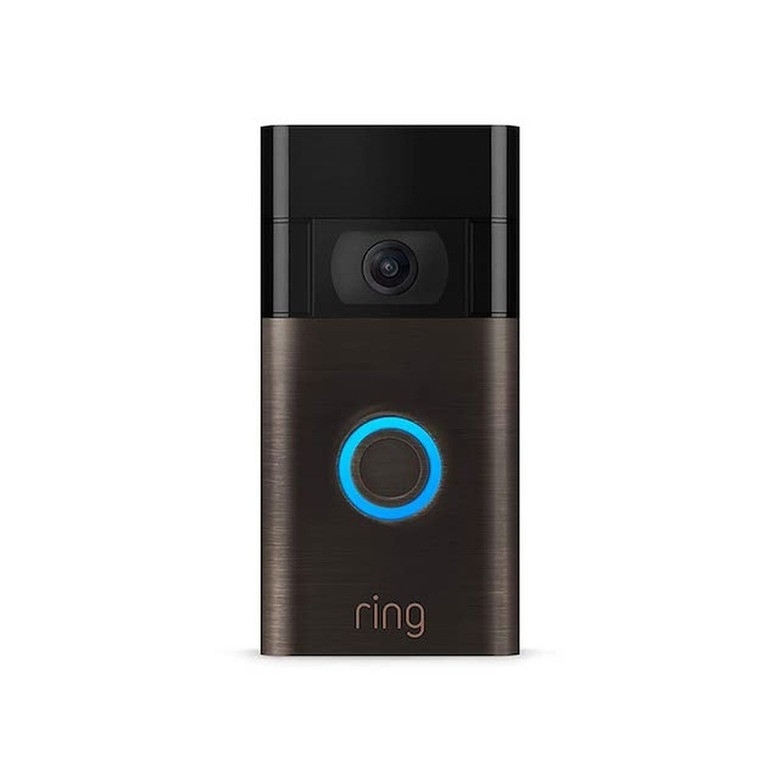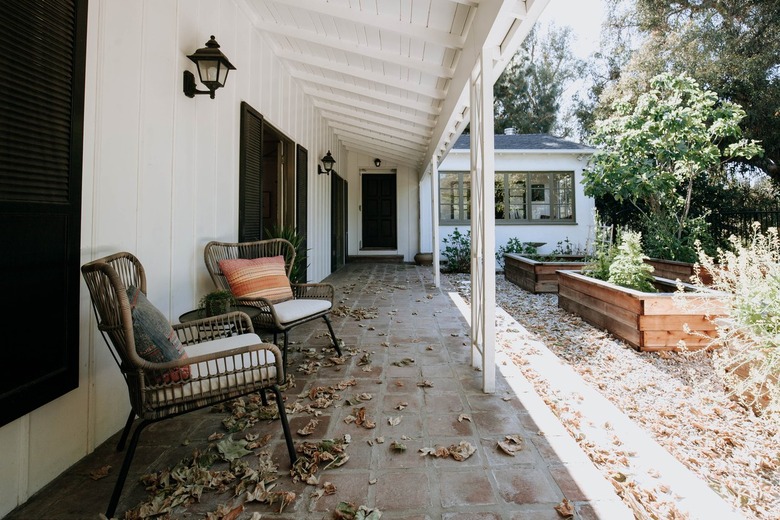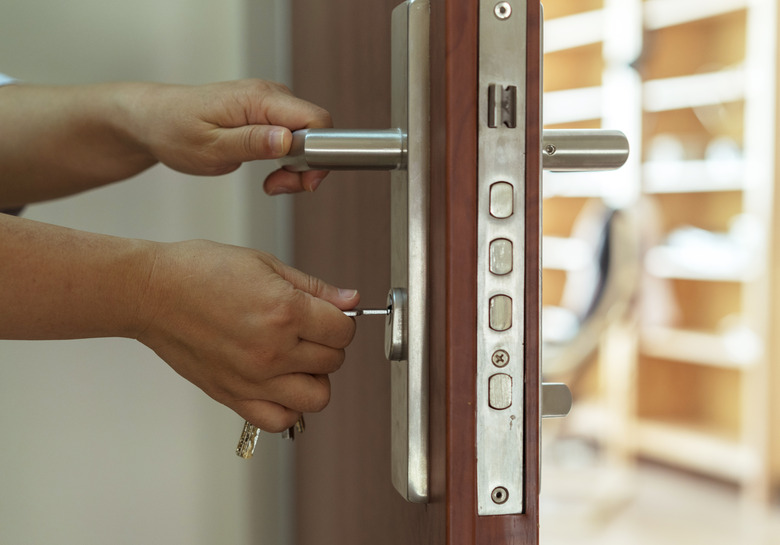8 Easy Ways To Improve Your Front Door's Security
Front door security is one of the most important aspects of a well-protected home. After all, why would burglars sneak around to a back door or break a window if they could easily pick the lock or kick in your front door in a matter of seconds? Fortunately, there are many easy DIY ways to beef up the security of your front entryway as well as any other exterior doors so that you can reduce the risk of break-ins and increase your peace of mind.
1. Get a good door.
1. Get a good door.
Some doors can't easily be made more secure. Hollow-core doors — even those made from metal — are simply not strong enough to keep out criminals. If your front door is hollow, it needs to be replaced because no basic improvements can make up for the fact that your door itself is too weak. If you need to replace your door, fiberglass and wood are both strong enough, but steel is the best material from a security standpoint.
Similarly, windows on a front door may be attractive, but if you're really concerned about your level of door security, it's best to avoid purchasing doors with glass. If you really love the look, make sure the glass is more than an arm's length from the locks, check that it's tempered or laminated, add a security film to strengthen, and install a glass-break sensor. Purchasing frosted or otherwise obscured glass is also a good idea since it not only increases your privacy but also prevents criminals from being able to do a visual assessment of your valuables from your front porch.
2. Improve strike plate security.
2. Improve strike plate security.
The two screws securing most door strike plates (the metal piece on the inside of a door frame) only go about 3/4 inch deep into the door jamb, which is itself only about 3/4 inch thick. This means that a strong kick can be enough to split the wood of a door frame and allow entry into the home. Purchasing new heavy-duty strike plates for both your deadbolt and your doorknob is an easy way to thwart would-be intruders.
When installing the new strike plates, use 3-inch screws to secure the plates not only to the door frame but also to the structural wall studs behind the frame. Make sure the screwheads sit flush with the plate to ensure your door closes properly. You may need to chisel out a little wood to accommodate the strike box plate and face plate, but the effort will be worth it.
Tip
When shopping for a new strike plate, look for a model with two screws inside the strike box in addition to the two screws securing the strike plate.
3. Replace your other hardware screws.
3. Replace your other hardware screws.
Of course, replacing your strike plates and giving them longer screws will only get you so far if the screws in your door hinges are still shallow enough to be kicked in. So, replace the screws holding in your door hinges — both the ones on the frame and those on the door — with 3-inch-long screws.
Be careful when driving the longer screws into the door frame, as they can pull the frame out of square if you drive them too far. Because they're going through the frame and into the wall stud, the screws can pull the frame toward the stud. Just make the screws tight enough so the hinges are secure but don't go any further.
4. Buy better locks.
4. Buy better locks.
All locks and their components are rated by the American National Standards Institute for their resistance to damage by hammers, saws, wrenches, and more. While Grade 1 locks are the best available, Grade 2 is still high quality and should be strong enough for residential use. Because it can be hard to find Grade 1 deadbolts in most home centers or hardware stores, you shouldn't be upset if you can only find Grade 2 locks. That being said, you may be able to find a Grade 1 deadbolt by going to a locksmith or by shopping online. Never rely on a Grade 3 door lock alone, even if the components inside might be rated at a higher grade.
While replacing a lockset is usually pretty straightforward, when you're looking to replace a deadbolt, make sure you measure the "backset" distance from the center of the hole to the edge of the door as well as the size of the cylinder hole. Many new locks have an adjustable backset, but it's always a good idea to measure first to ensure you find a compatible lock. Most new deadbolts need a 2 1/8-inch cylinder hole, so if yours is smaller, you can either drill the hole larger or purchase a lock with an insert that fits the older, smaller 1 1/2-inch hole size. While it is possible to buy deadbolts that are keyed on both sides, stick with a deadbolt with only one key slot because two-sided ones can be a fire hazard if the key is not readily available to open the door in an emergency.
You may also consider installing an additional deadbolt lock that can only be opened from the inside or a night latch to every entry door in your home. These are beneficial because there is no way to pick these locks, and they are very sturdy. Alternatively, a lock with a keypad or a smart lock can provide you with security without allowing ne'er-do-wells the opportunity to attempt to pick your lock.
5. Install a door barricade.
5. Install a door barricade.
Using a door reinforcement measure will allow you to sleep soundly knowing that even if someone picks your locks, there's still no way they'll be able to open your door. There are a few different models you can purchase depending on your needs. If you're a renter, a portable door lock, like the DoorJammer or a Masterlock security bar, might be your best option because they do not require installing anything on your door, floors, or walls. These are also a good option if you travel a lot because you can take them with you and use them in your hotel or vacation rental.
If you're looking for a more permanent option, a horizontal door security bar can be placed across your door, securing it to the exterior edge of the frame. Alternatively, you can use a door brace that slides in and out of plates screwed to the floor just behind your door. Whatever type of barricade you choose, always make sure it is easy to remove quickly in case of a fire.
6. Add a peephole or video camera.
6. Add a peephole or video camera.
The strongest door in the world won't help you if you open the door for someone you shouldn't let inside. That's why your home security system should allow you a way to see people outside your home without having to open the door. A good place to start is a wide-angle peep hole, which will allow you to get a good view of your entire porch in case someone does not stand right in front of the viewing hole.
While peepholes are nice, smart doorbells like the Ring are an even better solution since they allow you to view and talk to people at your door even when you're not home. This can be a great deterrent to criminals who may believe you're home and will know that you're watching their every move while on your property. Best of all, many of these devices will notify you as soon as someone steps on your porch, even if they never ring the doorbell.
A video camera (even a fake security camera) can also help deter thieves since many criminals do not want their faces recorded. That being said, don't ever only rely on a camera or a smart doorbell for crime deterrence: Your best bet when it comes to securing your home is to get a well-built, solid door with no windows, strong locks, sturdy hardware, and a secure barricade to block their entry.
7. Install a good porch light.
7. Install a good porch light.
It's true that burglars are less likely to break in while people are home. They also don't want to be seen by your neighbors if you're not home. This is why having a good porch light that can be seen from the street can be a good deterrent.
Consider also adding a motion-detecting flood light that will light up as people approach your door while staying off the rest of the night. This can be beneficial for a few reasons. First, it saves electricity. Second, if you're near a window at night, you're certain to notice when it turns on, letting you see who is at your door. Third, anyone up to no good might be hesitant to do anything when the lights turn on, especially if there's even a slight chance that someone inside just turned on the light as they stepped foot on your porch.
8. Remember to lock your doors.
8. Remember to lock your doors.
Of course, it's worth remembering that most of these measures will account for nothing if you fail to lock your door. While it may sound obvious, the simple fact that 12% of break-ins involve a criminal simply going through an unlocked door means that all too many people fail to lock their doors, rendering all other security measures pointless. If you have a hard time remembering to lock your doors, consider setting an alarm to remind you just before you go to bed.
What Makes Doors Vulnerable?
What Makes Doors Vulnerable?
Most people assume their exterior doors are secure simply because they have deadbolts, but statistics say otherwise. In fact, 65% of home burglaries involve the forced entry of the front, back, or garage entry door. That's because many doors can easily be kicked in, many locks are easily picked, and decorative windows on exterior doors can easily be broken, all of which mean that these doors are not actually all that secure.
Common weaknesses in door security include weak strike plates, hinges, and locks. The good news is that these can all be remedied fairly easily to increase your home's security.
